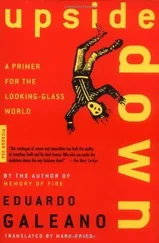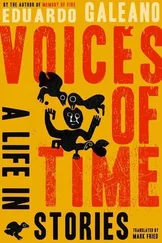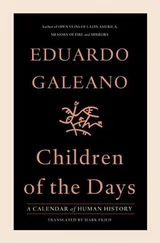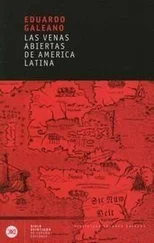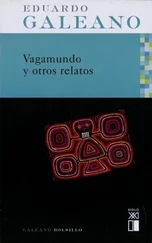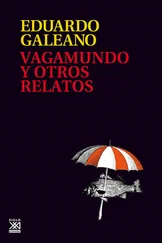Eighteen of Napoleon’s generals were buried on the rebel isle. The new nation, born in blood, was sentenced to blockade and solitude: no one bought from her, no one sold to her, no one recognized her. For being disloyal to the colonial master, Haiti was obliged to pay France a gigantic sum in reparations. This expiation for the sin of dignity, which she paid for nearly a century and a half, was the price France exacted for diplomatic recognition.
No one else recognized her. Not even Simón Bolívar, who owed her everything. Haiti had provided ships, weapons, and soldiers for his war of independence against Spain, on only one condition: that the slaves be freed, an idea that had never occurred to the man known as the Liberator. Later on, when Bolívar triumphed, he refused to invite Haiti to the congress of new Latin American nations.
Haiti became the leper of the Americas.
Thomas Jefferson warned from the beginning that the plague had to be confined to that island, because it provided a very bad example.
Bad example: disobedience, chaos, violence. In South Carolina, by law any black sailor could be jailed while his ship was in port, for fear he might spread the antislavery fever that threatened all the Americas. In Brazil, that fever was called haitianismo .

He was born a slave, the son of slaves.
He was frail and homely.
He spent his childhood chatting with horses and plants.
In time he became the master’s coachman and doctor to his gardens.
He had never killed a fly when the exigencies of war placed him where he now stands. Now he is called Toussaint L’Ouverture, because the blows of his sword part the enemy’s defenses. This self-made general instructs his troops, illiterate slaves, explaining the whys and hows of the Revolution through stories he learned or made up as a child.
It is 1803, and the French army is on its last legs.
General Leclerc, Napoleon’s brother-in-law, proposes:
“Let’s talk.”
Toussaint agrees.
They capture him, place him in chains, load him onto a ship.
Imprisoned in the coldest castle in France, from the cold he dies.

Look in any encyclopedia. Ask which was the first country to abolish slavery. The encyclopedia will answer: Britain.
It is true that one fine day the British Empire, the world champion of the slave trade, changed its mind after it totted up the numbers and realized the sale of human flesh was no longer so profitable. But London discovered slavery was evil in 1807 and the news was so unconvincing that it had to be repeated twice over in the next thirty years.
It is also true that the French Revolution had freed the slaves of the colonies, but the liberating decree, called “immortal,” died a short time later, assassinated by Napoleon Bonaparte.
The first country that was free, truly free, was Haiti. It abolished slavery three years before England, on a night illuminated by the sun of bonfires, while celebrating its recently won independence and recuperating its forgotten indigenous name.

The abolition of slavery was also repeated throughout the nineteenth century in the new Latin American nations.
Repetition was proof of impotence. In 1821, Simón Bolívar pronounced slavery dead. Thirty years later, the deceased still enjoyed good health, and new laws of abolition were decreed in Colombia and Venezuela.
The very day in 1830 that Uruguay’s constitution was proclaimed, the newspapers featured advertisements like:
For sale: very cheap, a Negro shoemaker.
For sale: one maid recently given birth, good for the lady.
For sale: one young Negro, 17 years old, no vices.
For sale: one very Spanish-looking mulatta for all farm work, and one large sugar kettle.
Five years before, in 1825, the first law forbidding the sale of persons in Uruguay had been passed, and it had to be repeated in 1842, 1846, and 1853.
Brazil was last in the Americas, next to last in the world. Slavery was legal until the end of the nineteenth century. Afterward, it was illegal but still operative, and that remains the case today. In 1888, the Brazilian government ordered all existing documentation on the topic burned. Thus slave labor was officially erased from the country’s history. It died without having existed, and it exists despite having died.

In Pakistan, as in other countries, slavery survives.
Children of the poor are disposable goods.
When Iqbal Masih was four, his parents sold him for fifteen dollars.
He was bought by a rug maker. He worked chained to the loom fourteen hours a day. At the age of ten, Iqbal was a hunchback with the lungs of an old man.
Then he escaped and became the spokesman for Pakistan’s child slaves.
In 1995, when he was twelve years old, a fatal bullet knocked him from his bicycle.

In 1804, Napoleon Bonaparte crowned himself emperor and decreed a civil code known as the Napoleonic Code, which still serves as the legal foundation for nearly the entire world.
This masterpiece of the bourgeoisie in power consecrated double standards and elevated property rights to the highest perch on the altar of justice.
Married women were deprived of rights, as were children, criminals, and the mentally deficient. A woman had to obey her husband. She had to follow him wherever he led, and she needed his permission for practically everything but breathing.
Divorce, which the French Revolution had made into a simple transaction, was restricted by Napoleon to cases of serious misconduct. The husband could divorce his wife for adultery. The wife could only get a divorce if enthusiasm led the husband to bed his lover on the matrimonial mattress.
In the worst of cases, the adulterous husband paid a fine. In every case, the adulterous wife went to prison.
The code did not authorize murdering an unfaithful wife caught in flagrante. But when a cuckolded husband killed, the judges, always men, whistled and looked the other way.
These dispositions, these customs, held sway in France for more than a century and a half.

In the midst of conquering Europe, Napoleon crossed the Alps at the head of his immense army.
Jacques-Louis David painted the scene.
In the painting Napoleon wears the handsome dress uniform of the commanding general of the French army. The golden cape flutters with timely elegance in the breeze. His hand, held high, points to the heavens. His brisk white steed, mane and tail curled in the beauty shop, echoes his gesture by rearing up on two legs. The rocks on the ground are engraved with the names of Bonaparte and his two comrades, Hannibal and Charlemagne.
In reality, Napoleon did not wear a uniform. He crossed the freezing heights shivering with cold, wrapped in a heavy gray overcoat that covered his face, and on the back of an equally gray mule that struggled to keep its foothold on the slippery anonymous rocks.
Читать дальше







